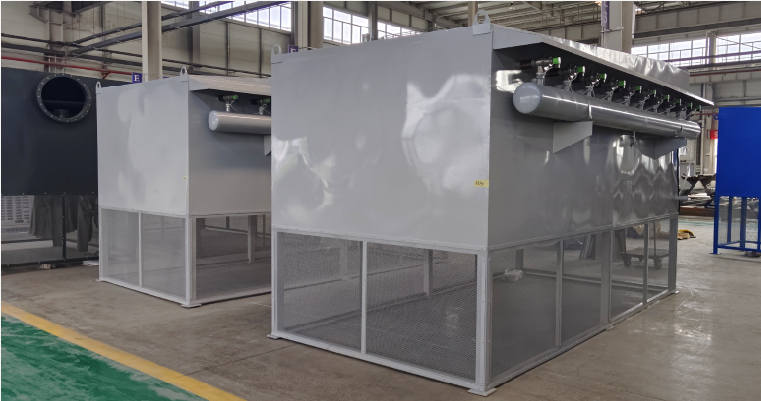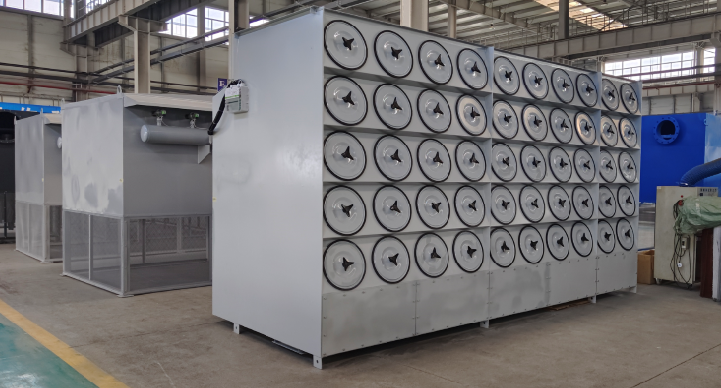
Oil industry governance background:
Petrochemical waste gas can be divided into petroleum refining waste gas, petrochemical waste gas, synthetic fiber waste gas and petroleum fertilizer waste gas according to the production industry. The exhaust gas emitted by the four major production industries can be divided into combustion flue gas, production process exhaust gas, torch exhaust gas and unorganized exhaust gas. In the petrochemical industry, combustion waste gas is emitted from the furnace and boiler combustion of refineries and petrochemical plants; excess gases such as non-condensing gas, release gas and by-products from reactions produced by production plants; volatilization and leakage of light oil products, volatile chemicals and solvents during storage and transportation; malodors and toxic gases emitted during the treatment and transportation of wastewater and wastes; As well as the waste gas emitted by volatilization and leakage during transportation of recycled raw materials and products in petrochemical plants are the main sources of waste gas in petrochemical industry.

Characteristics of the oil industry:
Petrochemical refinery contains a large number of harmful gases, methyl mercaptan, methyl sulfide, benzene, styrene, hydrogen sulfide and so on, these chemical gases, not only can cause headache, nausea and different degrees of anesthesia, but also can make people lose appetite, nervous system anesthesia and other symptoms. Petroleum refining is an industry with heavy odor pollution. In order to reduce the petrochemical industry waste gas pollution, in addition to taking the necessary environmental control measures, effective management of pollutant emission and control, the fundamental measure is to use no pollution or less advanced production technology; Improve the equipment, improve the airtightness of machine pump equipment and pipeline equipment; Actively carry out waste gas recovery and comprehensive utilization.

Pollution production links in the oil industry:
Petrochemical industry waste gas can be divided into petroleum refining waste gas, petrochemical waste gas, synthetic fiber waste gas and petroleum fertilizer waste gas. The exhaust gas emitted by the four major production industries can be divided into combustion flue gas, production process exhaust gas, torch exhaust gas and unorganized exhaust gas.
1, combustion flue gas pollution: petrochemical device combustion flue gas emissions account for about 60% of the total waste gas emissions. The residual oil contains about 0.2-3% sulfur. The exhaust gas produced by combustion contains sulfur dioxide, nitrogen oxide and dust, which are discharged after dust removal. The sulfur dioxide and nitrogen oxide are not treated and are generally discharged from high altitude.
2. Process waste gas pollution: The production equipment of petrochemical enterprises is large, so the process waste gas emission is large. Although the pollutants are discharged at high altitude, the environmental pollution is still serious.
3. Torch exhaust gas pollution: torch is a necessary safety and environmental protection facility for petrochemical production. The petrochemical production unit will discharge the combustible gas to the flare after combustion under the condition of opening, shutting down and abnormal operation (such as degassing and decompression). The amount of pollution discharged by the torch is larger than that of the heating furnace, and the impact on the environment is larger.
4. Exhaust pollution: the process waste gas of petrochemical production is recycled and treated by industrial devices and discharged into the environment as exhaust gas.
5. Unorganized emission of waste gas pollution: the unorganized emission of petrochemical enterprises mainly includes two parts: one is the leakage of pipelines, pumps and equipment in the production process, and the harmful gases discharged into the environment from volatilization in the gutter; Second, light petrochemical products in the process of storage and transportation of petroleum product vapor volatilization into the environment pollution air.

Treatment process description:
The organic waste gas produced by petrochemical plant has high recovery value. Among many methods of oil and gas recovery, the combined process of "condensation + adsorption" is very popular among users. In this process, activated carbon is used as the adsorbent. After adsorption and saturation, the desorption is heated, and the desorption concentrated gas is condensed and recovered, so as to purify and recover the organic gas.
Adsorption process: exhaust gas through the air filter to remove the small suspended particles into the tank, through filling in the tank granular activated carbon (or activated carbon fiber) adsorption filter and then by the rear fan empty (such as the concentration of gas can be used when the multi-section adsorption device, to ensure gas emission standards).
Desorption process: activated carbon is saturated after being used for a period of time. At this time, activated carbon needs to be regenerated. Temperature analysis method is used for desorption regeneration, and high temperature steam is sprayed into the tank from the bottom of the tower to peel organic matter from activated carbon.
Recovery process: the stripped gas is cooled by the supporting condenser and then enters the separation bucket to separate and recover the organic solvent. The residual liquid enters the aeration bucket and then comes out after aeration (if the high-precision solvent needs to be recovered, a set of rectification equipment can be placed behind the separation bucket).
